Two things exist with our list of large dog breeds that don’t shed. First, they are all working animals with a defined purpose enhanced by selective breeding. Second, there’s a noticeable absence of ancient breeds, such as the Samoyed, Chow Chow, and Alaskan Malamute. These spitz-like dogs shed, often with two definitive seasons when the dogs blow their coats.
Dogs tend to shed more if they have an undercoat. This extra hair isn’t needed in the warmer months, so they tend to thin it out, much to the chagrin of their owners. It’s important to note that all dogs shed somewhat as replacing worn and damaged hairs is a normal process, not unlike what you experience. With that said, several things besides breed can affect how much a dog sheds, including nutrition, environmental conditions, and health. If you’re looking for a big dog but want to keep the shedding to a minimum, here are some possibilities.


How Are Dogs Classified?
The American Kennel Club (AKC) classifies breeds based on their historic job, anatomy, and other factors representing common denominators between the dogs. This system helps enthusiasts, veterinarians, and scientists understand our canine companions better to improve their physical and mental health care. The defined AKC groups are the following:
- Herding Group
- Hound Group
- Non-Sporting Group
- Sporting Group
- Terrier Group
- Toy Group
- Working Group.


The 18 Large Dog Breeds That Don’t Shed Much
1. Standard Poodle
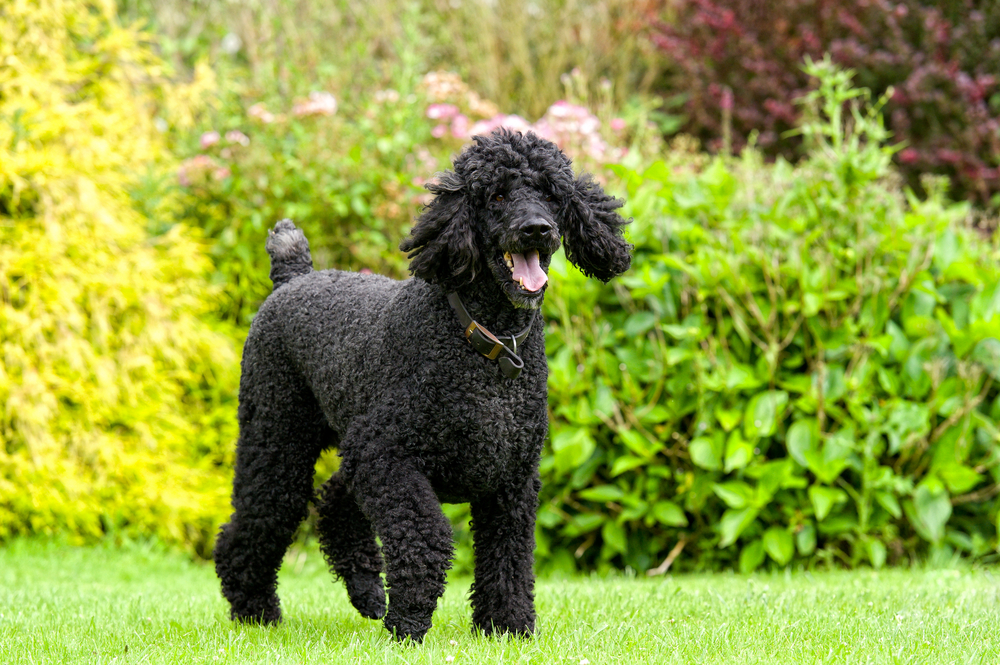

| AKC Group: | Non-Sporting |
| Height: | Over 15 inches |
| Weight: | 40–70 pounds |
| Temperament: | Intelligent, happy, enthusiastic |
Given their history as water dogs, it seems odd that the Standard Poodle is in the Non-Sporting Group. They are highly intelligent and capable of doing anything needed in the field. They are alert and always enthusiastic, and their energy is contagious. Poodles have a curly coat that doesn’t shed much but does require regular grooming to prevent matting.
2. Afghan Hound
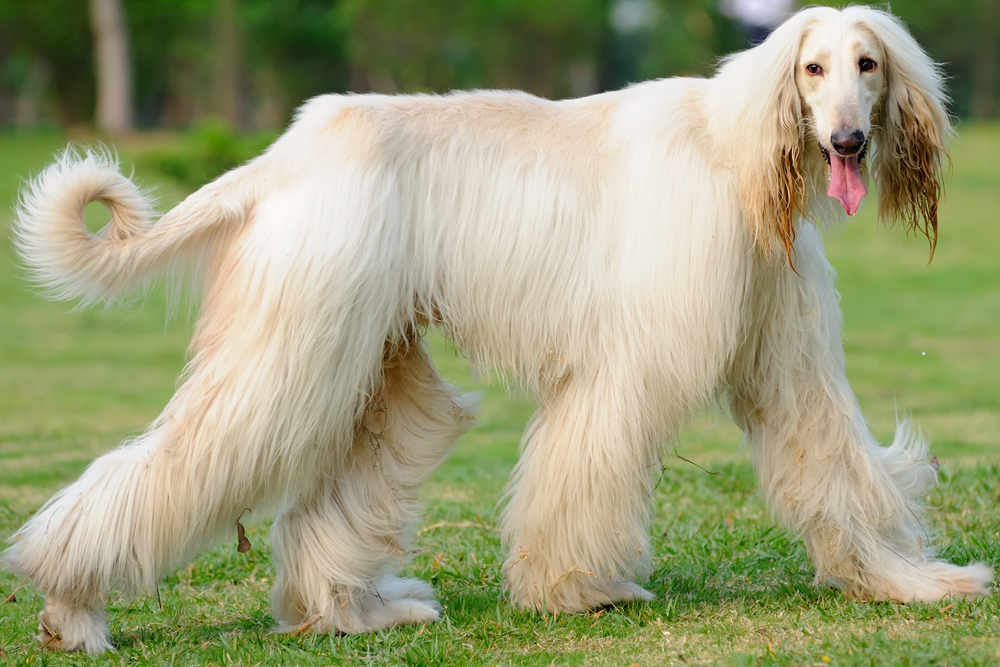

| AKC Group: | Hound |
| Height: | 25–27 inches |
| Weight: | 50–60 pounds |
| Temperament: | Graceful, intelligent, reserved |
You can’t help but notice an Afghan Hound, and they thankfully don’t shed much. Their long coats are silky and long. But even though they are low shedders, they need frequent grooming to prevent mats and keep their hair trimmed neatly. This breed is intelligent yet independent, making them better suited to experienced pet owners.
3. Airedale Terrier
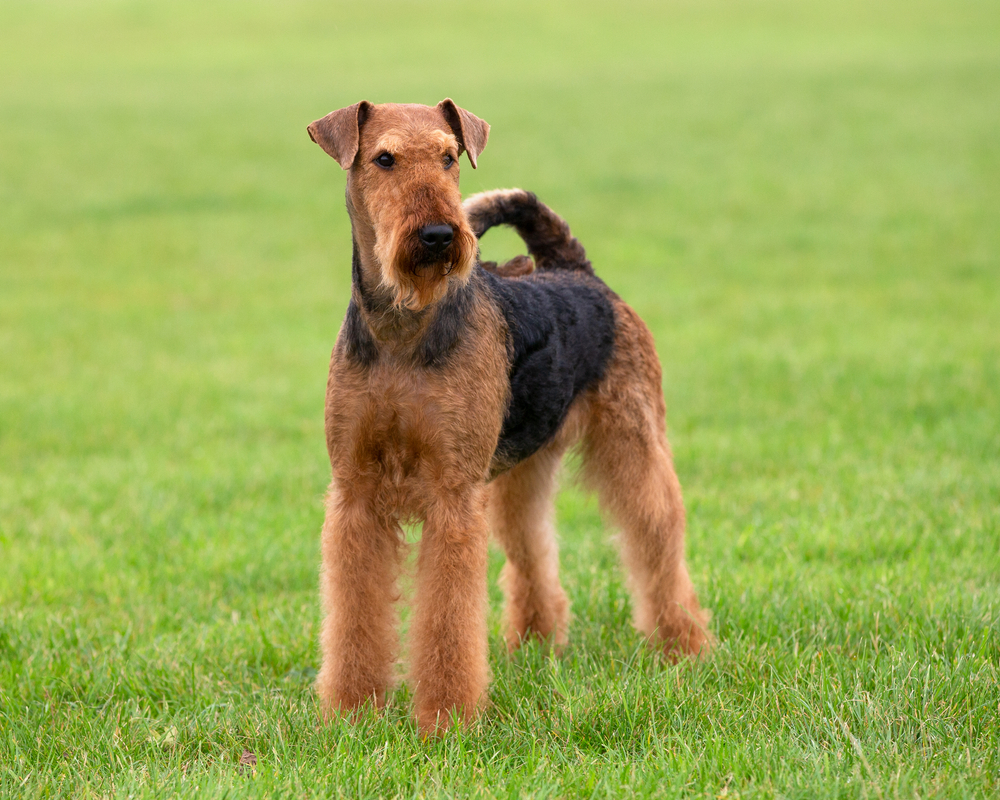

| AKC Group: | Terrier |
| Height: | 23 inches |
| Weight: | 45–70 pounds |
| Temperament: | Fearless, intelligent, loyal |
The Airedale Terrier isn’t your average member of this group. This pup is versatile in the many jobs these animals have fulfilled. They started as hunting companions and ratters. Their intelligence made them excellent choices for more demanding work in the military and law enforcement. They are courageous and protective of their families, making them good watchdogs.
4. Barbet
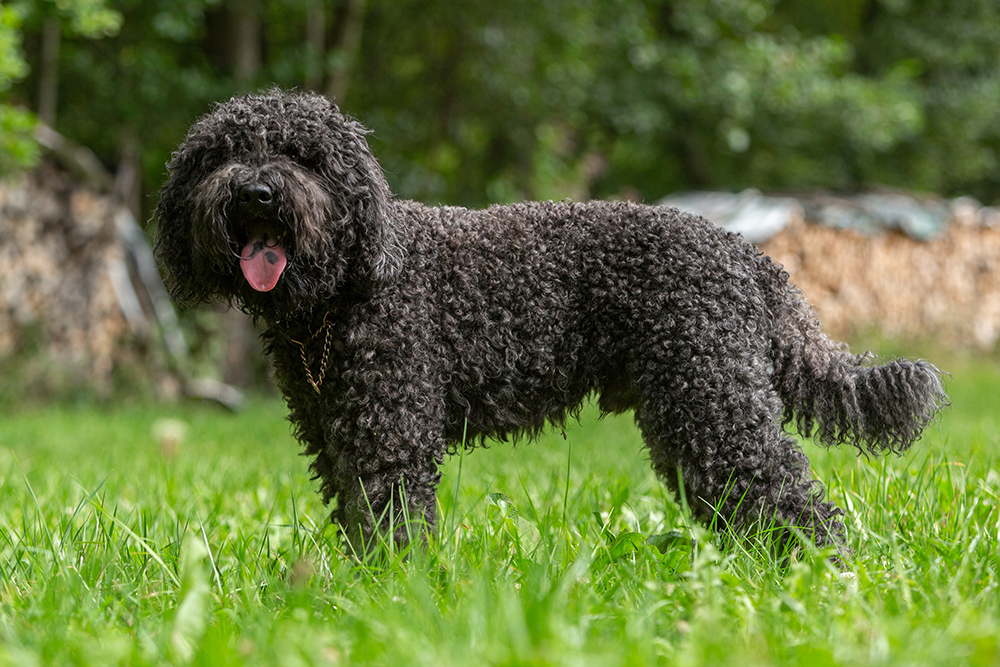

| AKC Group: | Sporting |
| Height: | 19–24.5 inches |
| Weight: | 35–65 pounds |
| Temperament: | Easy-going, |
The Barbet sheds minimally, despite their long, curly coat. These pups are at home in the water and the field as tireless hunting companions. They seem to enjoy the work wholeheartedly. This French canine has a history going back hundreds of years in their native land, although the breed almost died out like many European dogs during the world wars. It’s a recent addition to AKC, getting recognition in 2020.
5. Bearded Collie
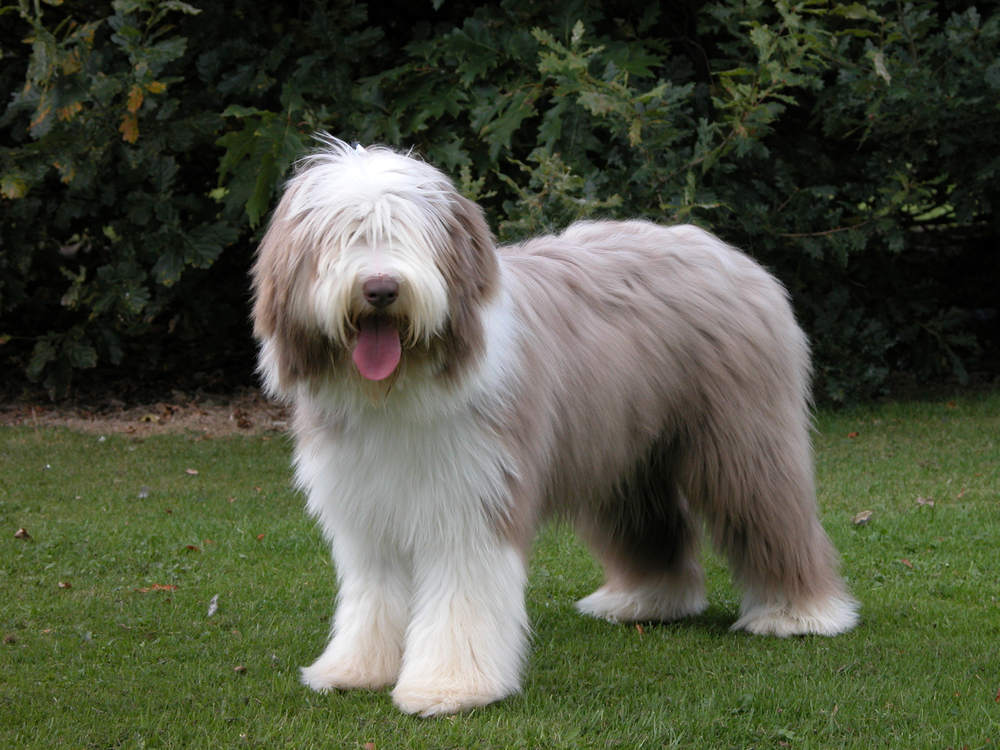

| AKC Group: | Herding |
| Height: | 20–22 inches |
| Weight: | 45–55 pounds |
| Temperament: | Affectionate, intelligent, playful |
The Bearded Collie is a sweetheart. This dog is quite intelligent, which isn’t unexpected in a herding animal. They often work independently and must be alert to manage the livestock. This pup is usually vocal since it comes in handy with rounding up cattle and sheep. Their long, silky coat sheds a lot once per year, but frequent grooming the rest of the year can keep it under control and mat-free.
6. Black Russian Terrier
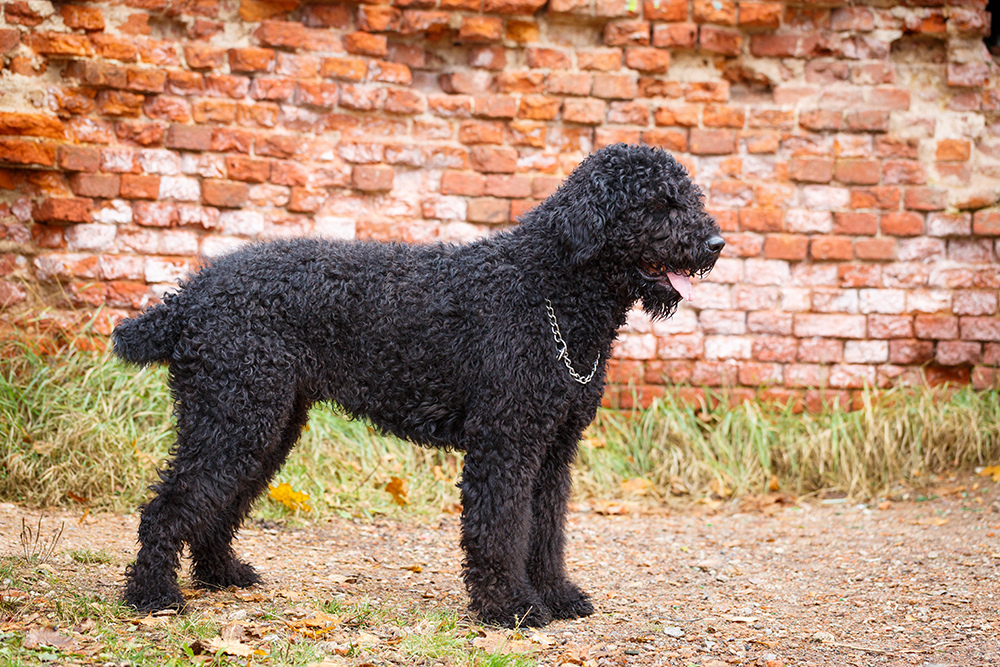

| AKC Group: | Working |
| Height: | 26–30 inches |
| Weight: | 80–130 pounds |
| Temperament: | Courageous, energetic |
The Black Russian Terrier resembles a Schnauzer, one of 17 breeds used for selectively breeding this pup. The goal was a versatile and fearless guardian and military dog. This animal is highly intelligent and more than capable of these demands. Thankfully, they shed very little, although they will shed more twice per year.
7. Bouvier des Flandres
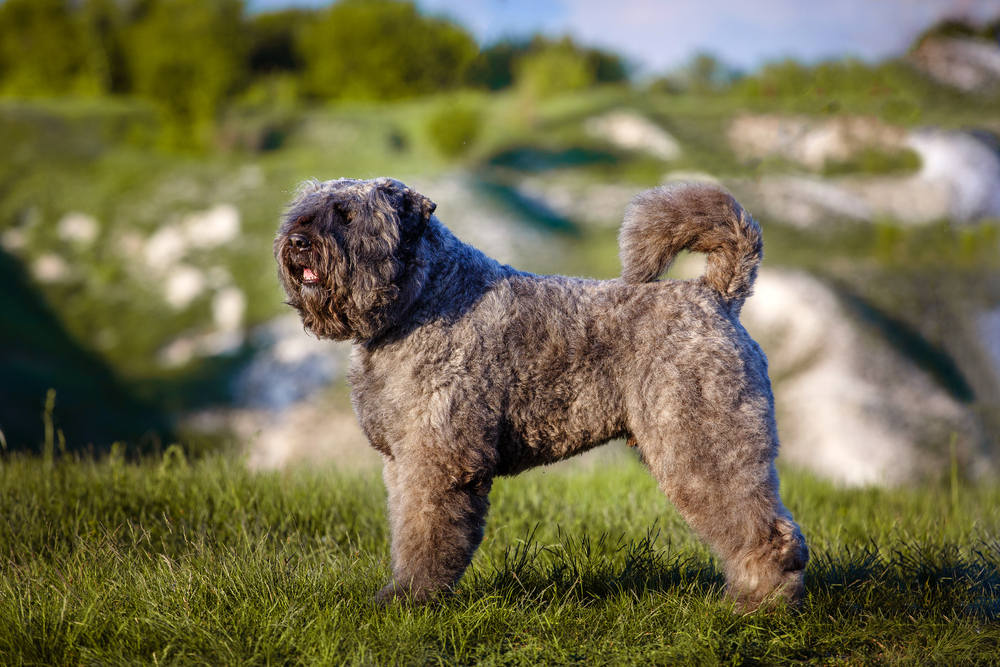

| AKC Group: | Herding |
| Height: | 23.5–27.5 inches |
| Weight: | 70–110 pounds |
| Temperament: | Energetic |
The Bouvier des Flandres was selectively bred as a herder, with the size, intelligence, and big voice for the job. This pup has also been an all-purpose farm dog because of these traits. However, the animal’s beauty caught the fancy of many enthusiasts. The Bouvier has a medium double coat that requires regular brushing to control the shedding, but it isn’t nearly as much as other large breeds.
8. Boxer
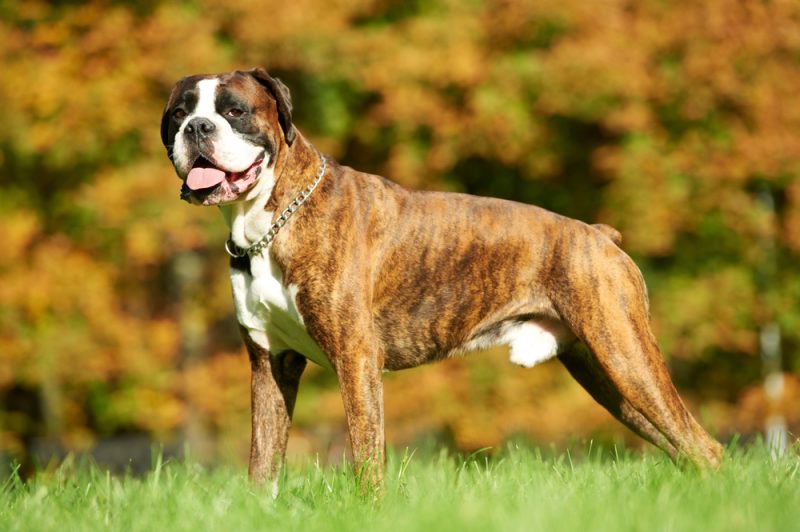

| AKC Group: | Working |
| Height: | 21.5–25 inches |
| Weight: | 60–80 pounds |
| Temperament: | Happy-go-lucky, sweet, energetic |
The Boxer is a joy to be around because of the dog’s friendly and happy nature. It’s a sharp contrast to the breed’s past. We have dedicated enthusiasts to thank for selectively breeding this pup to make them the delightful pets they are today. The dog’s smooth, short coat needs only weekly brushing with a curry brush or hound glove to keep shedding to a minimum. However, the shedding does pick up in spring and autumn.
9. Briard
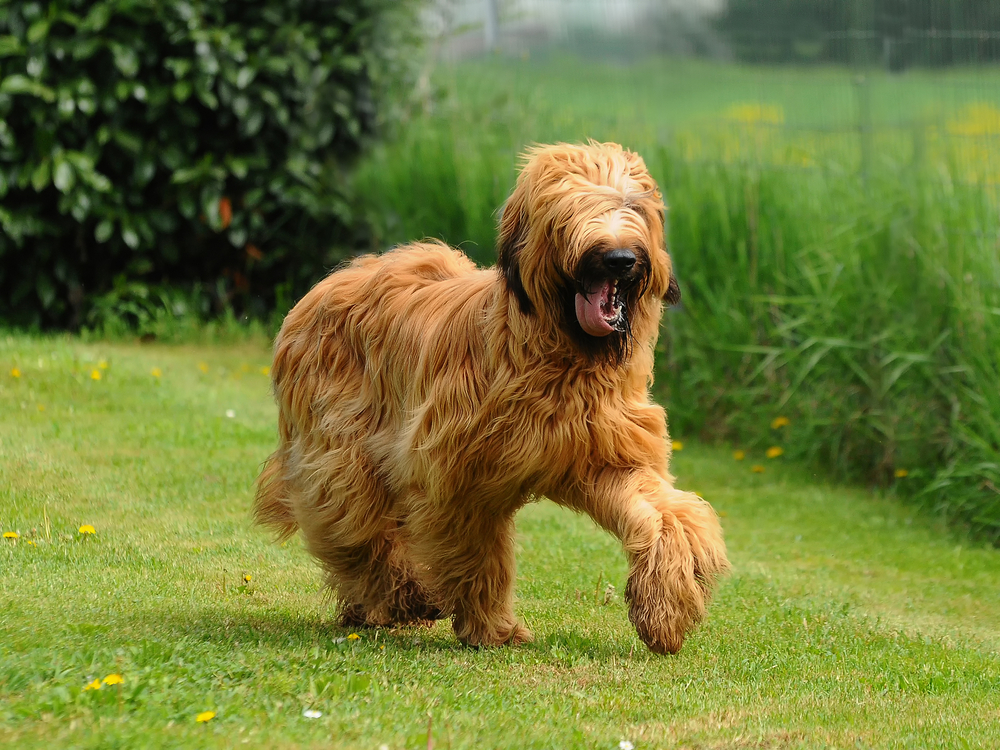
| AKC Group: | Herding |
| Height: | 22–27 inches |
| Weight: | 55–100 pounds |
| Temperament: | Loyal, confident, protective |
The Briard is a hard-working dog, serving as both a herder and guardian of livestock. You can’t help but fall in love with this loyal and affectionate pet. This pup is intelligent and willing to go the extra mile for their families. While the animal has a long, wavy coat, they shed minimally. Regular grooming is necessary to keep your pup mat-free and looking their best.
10. Giant Schnauzer
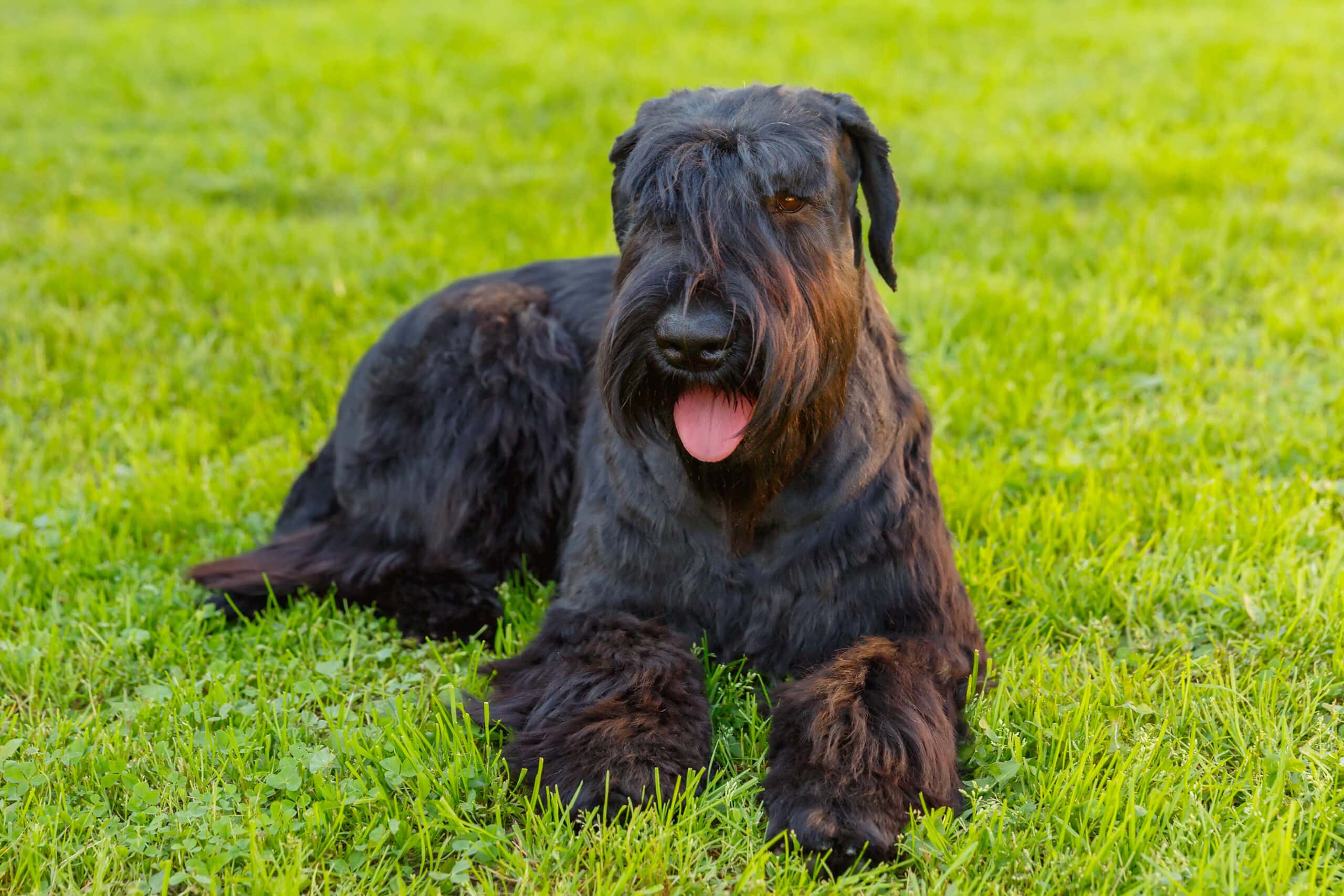

| AKC Group: | Working |
| Height: | 23.5–27.5 inches |
| Weight: | 55–85 pounds |
| Temperament: | Eager to please, hard-working, playful |
The Giant Schnauzer can do it all, including driving cattle or playing fetch. This pup is easy to train and eager to please. The dog’s size also makes it a formidable guardian for livestock or the homestead. This pooch’s wiry double coat needs weekly brushing, although some people prefer to keep it short with regular trimming.
11. Greyhound
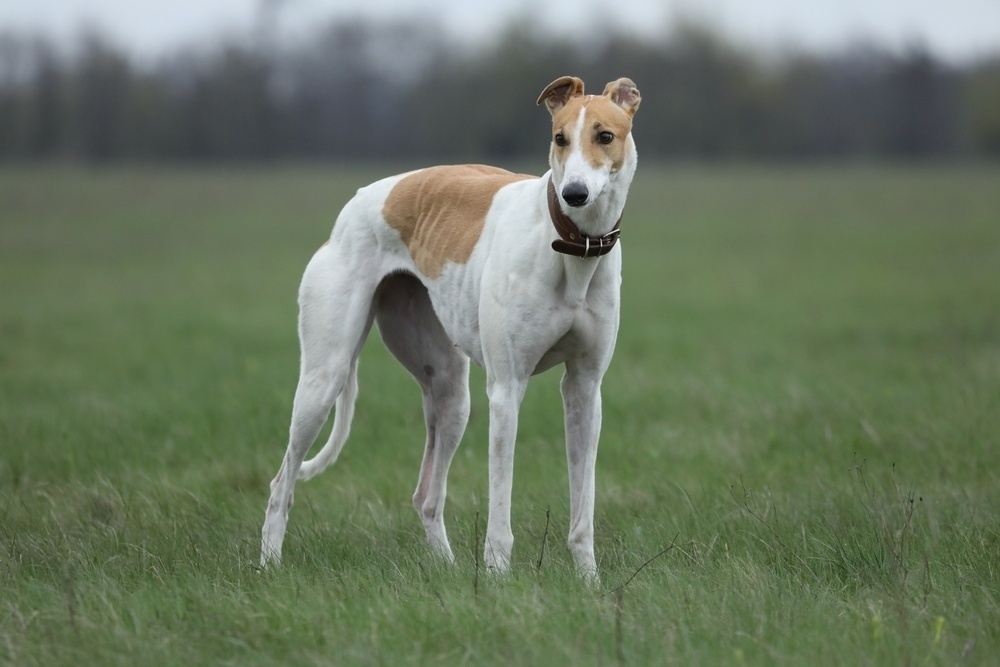

| AKC Group: | Hound |
| Height: | 27–30 inches |
| Weight: | 60–70 pounds |
| Temperament: | Energetic, gentle, alert |
The Greyhound is as sweet as it looks. This deep-chested dog is ready for anything with the energy to match. They are easily trained with consistent lessons to reinforce their canine manners. They are intelligent animals with a keen prey drive. While they do shed a bit, they aren’t considered heavy shedders, and it can be kept to a minimum with regular grooming.
12. Ibizan Hound
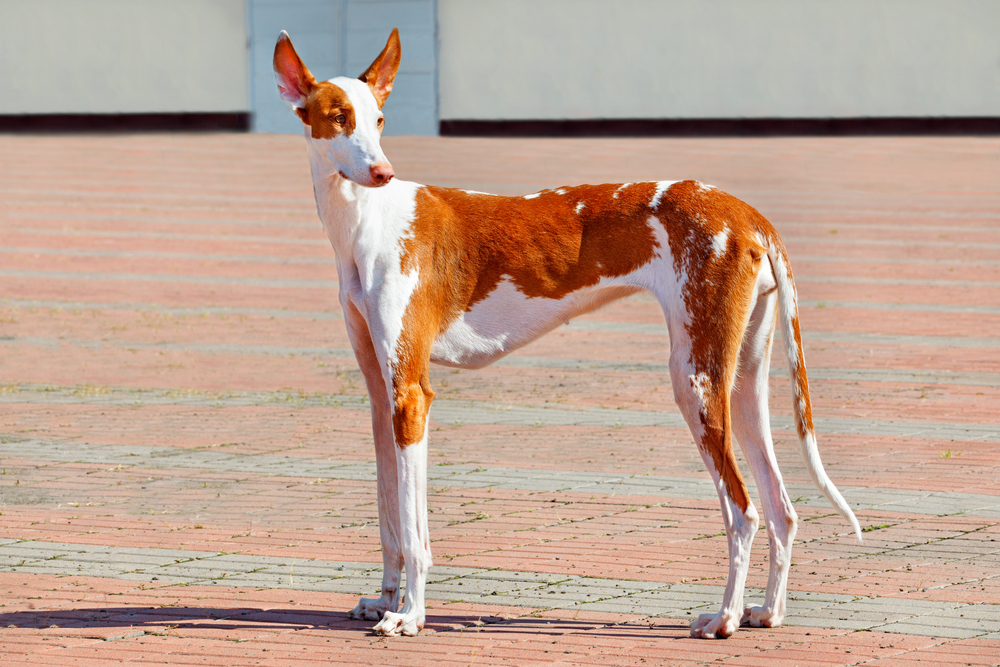

| AKC Group: | Hound |
| Height: | 22.5–27.5 inches |
| Weight: | 45–50 pounds |
| Temperament: | Elegant, easy-going, playful |
The Ibizan Hound is a handsome dog that always seems to strike an elegant pose. They are high-energy animals that love to play. They are all about family, freely showing their affection. It’s an ancient breed, with a history going back thousands of years to the Phoenicians. They also don’t shed much, although you should brush them weekly to keep it to a minimum.
13. Irish Water Spaniel
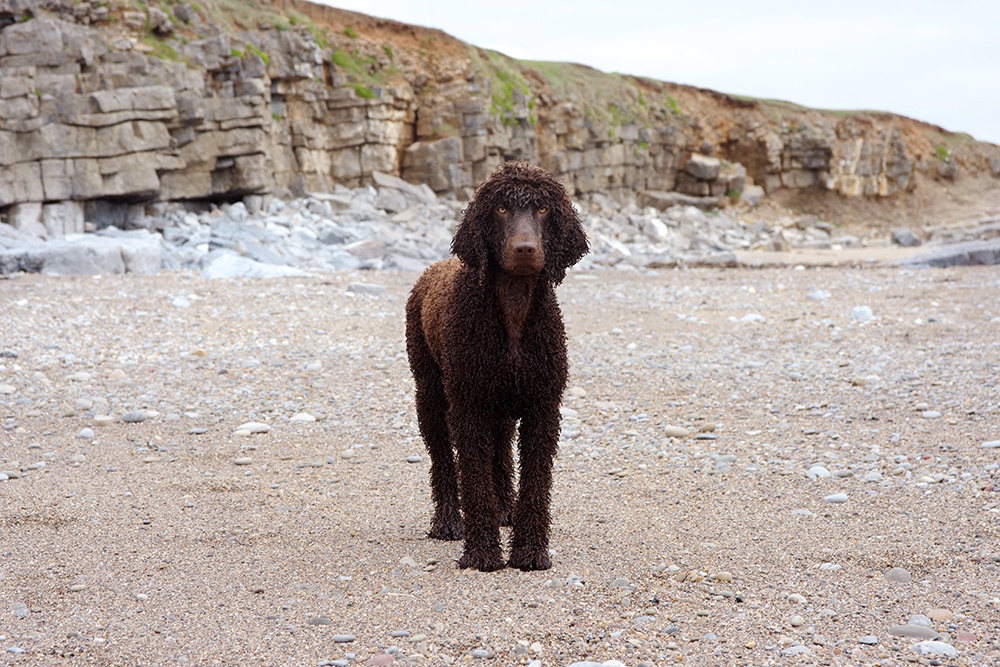

| AKC Group: | Sporting |
| Height: | 21–24 inches |
| Weight: | 45–68 pounds |
| Temperament: | Playful, affectionate, eager to please |
The Irish Water Spaniel is a fitting addition to the Sporting Group. It’s all about the hunt for this pup, but they also love to play. Since they are excellent retrievers, this dog will keep the game going as long as you want to throw the ball. They shed minimally despite their medium, curly coats, and they are said to be good for some allergy sufferers.
14. Komondor
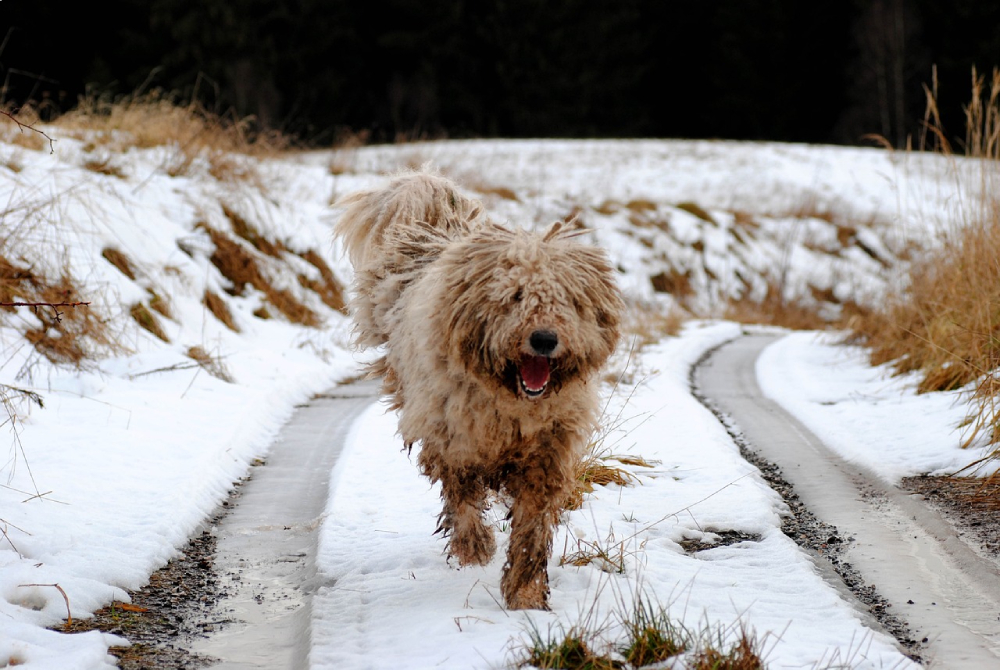

| AKC Group: | Working |
| Height: | 25.5–27.5 inches |
| Weight: | 80–100 pounds |
| Temperament: | Protective, intelligent, easy-going |
The Komondor began life as a livestock guardian in their native Hungary. These dogs have all the necessary skills: alertness, intelligence, and independence. Yet, they are calm animals despite their high need for mental stimulation. Their long, corded coat sheds minimally, even if it looks a bit odd. It also provides welcome insulation when in the field.
15. Portuguese Water Dog
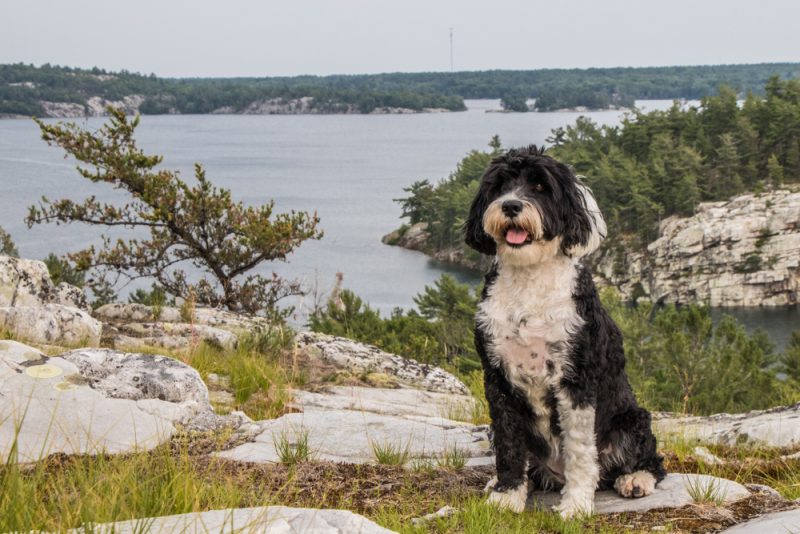

| AKC Group: | Working |
| Height: | 17–23 inches |
| Weight: | 35–60 pounds |
| Temperament: | Happy, active, affectionate |
The Portuguese Water Dog loves everyone, including other pups. This dog has an adventurous side, thanks to the breed’s development alongside the fishing trade. Their long, curly coats need regular brushing, particularly if you let your pet go swimming. You can also keep it cut short to cut down on grooming. However, they are said to shed much less than other breeds.
16. Saluki
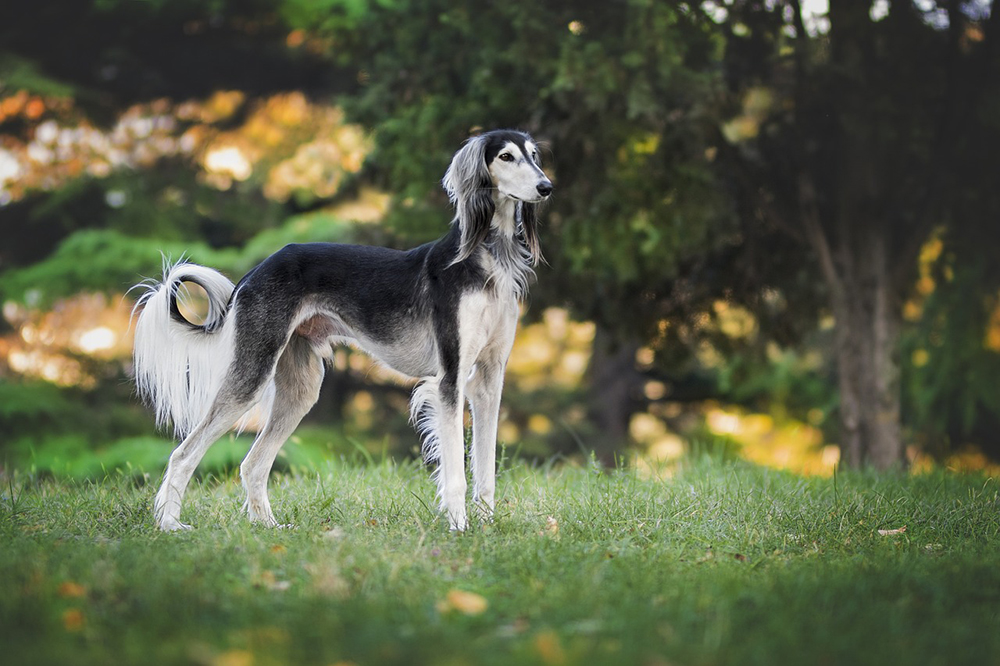

| AKC Group: | Hound |
| Height: | 23–28 inches |
| Weight: | 40–65 pounds |
| Temperament: | Gentle, active, intelligent |
According to Guinness World Records, the Saluki is another ancient breed and maybe perhaps the oldest domesticated dog breed. They are highly intelligent animals that need mental stimulation and enrichment to thrive. They are amazingly clean dogs, putting them on a par with cats in self-grooming. Weekly brushing will keep their coats looking their best, but they don’t shed much to begin with.
17. Schapendoes
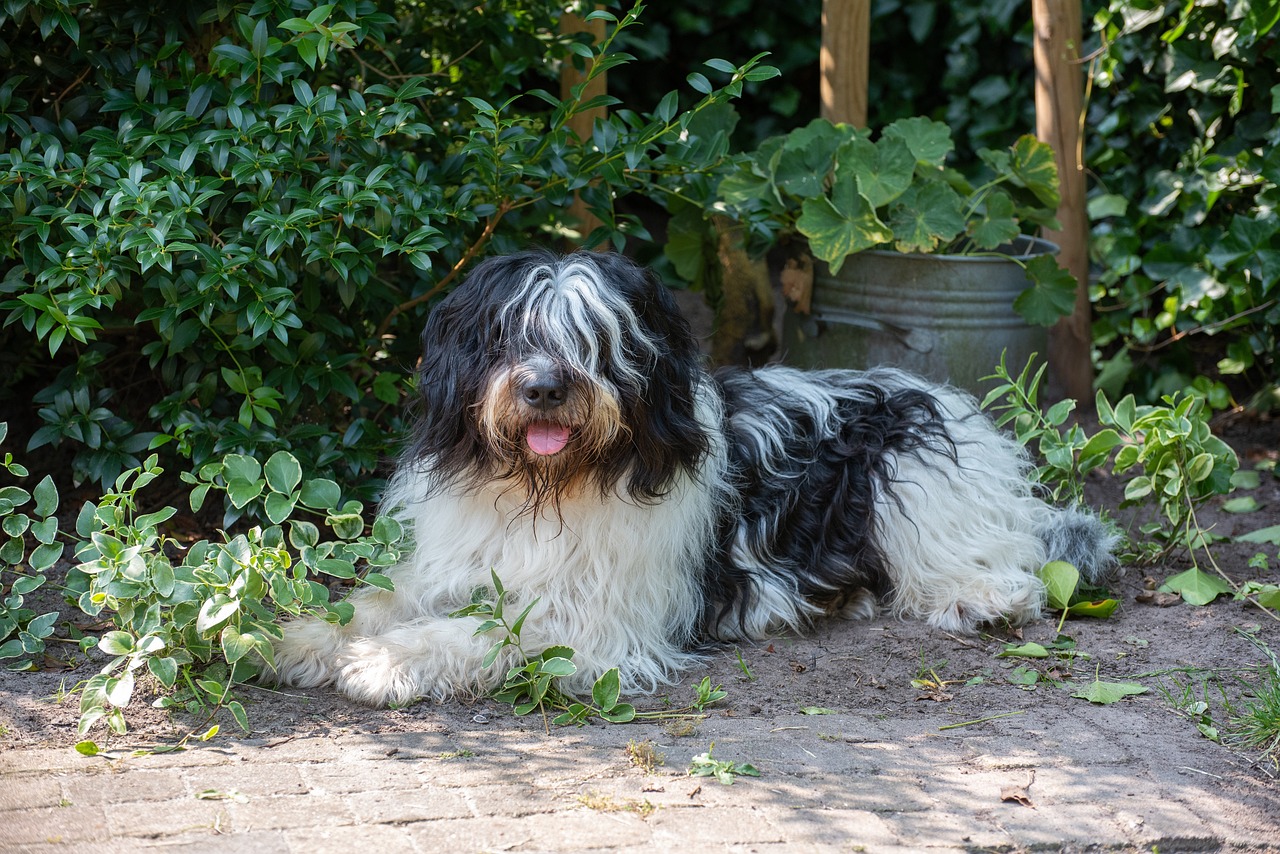

| AKC Group: | FSS-Herding |
| Height: | 16–20 inches |
| Weight: | 26–55 pounds |
| Temperament: | Friendly, fearless, loyal |
The Schapendoes is a Foundation Stock Service dog destined for the Herding Group. The breed is also known as the Dutch Sheepdog. This pup has many traits of herders, including high energy, devotion, and protectiveness. They are devoted to their families and charges. This breed also suffered during the world wars, but enthusiasts have worked tirelessly to ensure future generations. They do shed more during the spring and autumn, but it’s far less during the rest of the year or some other large breed dogs.
18. Standard Xoloitzcuintli
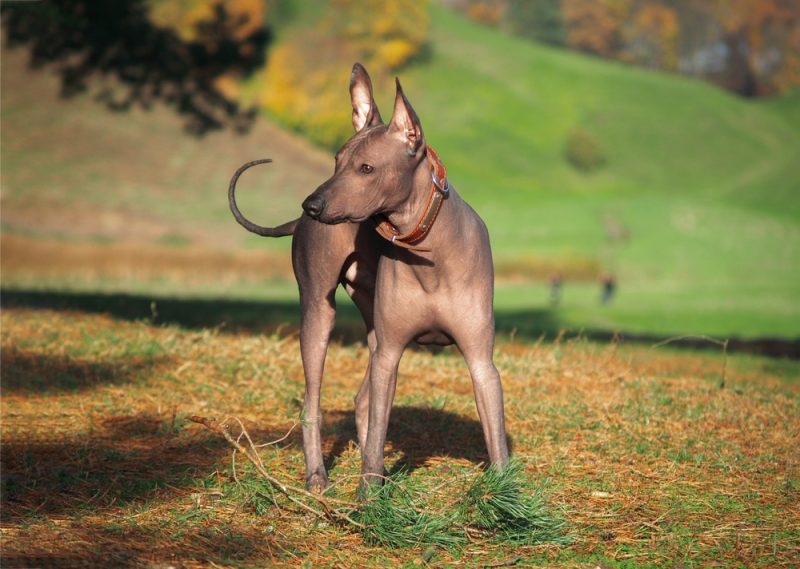

| AKC Group: | Non-Sporting |
| Height: | 18–23 inches |
| Weight: | 30–55 pounds |
| Temperament: | Affectionate, trainable, adaptable |
The Standard Xoloitzcuintli is also known as the Mexican Hairless Dog because of the animal’s unique coat. Their history goes back thousands of years to the Aztecs, making them the North American equivalent of breeds considered sacred to the Ancient Egyptians. This pup doesn’t shed much thanks to the lack of fur but does need sunscreen when going outdoors to protect their skin.

 Determining Which Dogs Shed
Determining Which Dogs Shed
Science has come a long way toward identifying which dogs shed and to what degree through DNA testing. The genetics behind shedding is complex. However, researchers have discovered two genes with the most significant effect: MC5R and RSPO2. That’s good news for breeders and pet owners because they have access to this information to better match dogs and households.
The MC5R gene affects shedding. The RSPO2 gene involves the furnishings or hair on the animal’s eyebrows and mustache, characteristic of breeds such as the German Wirehaired Pointer. Dogs with no furnishings, referred to as an improper coat, are more likely to shed than those with these features.
Inheritance Patterns
Each gene has two variants or alleles. The combination of what a puppy inherits from their mother and father offers a reliable indicator of how much that animal will shed. The involvement of two genes means a spectrum of inheritance patterns and, thus, the degree of shedding, going from high to moderate to low.
Genes can either be dominant or recessive. A trait is expressed if just one of the dominant alleles is present in the pair. An animal inherits the alternative only if both alleles are recessive. Scientists indicate a dominant trait with a capital letter representing the gene and a lowercase for the recessive.
For example, let’s give the dominant shedding trait the shorthand “S” and the recessive form “s.” A puppy with SS or Ss will shed. A pup that has the ss pair will not shed as much. Let’s consider the effect of furnishings. It is also a dominant trait, so FF and Ff mean the pup has them. A dog with ff won’t have this feature. The scale of shedding varies with the interplay of these two genes.
Sellers can conduct pre-breeding DNA screening of their dogs for the shedding trait. They can also test the puppies. If it’s a dealbreaker for you, we suggest asking about it before you buy. It’s affordably priced and easy to collect a sample. It can give you the peace of mind you need before bringing home a pet.
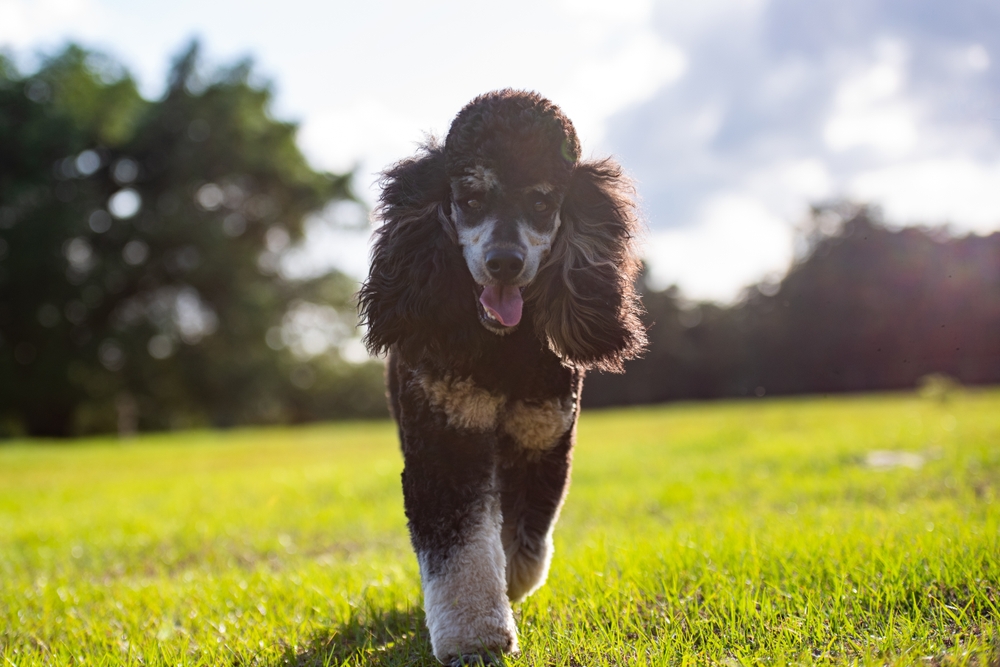

The Hypoallergenic Myth
Many people consider non-shedding dogs in hopes they are hypoallergenic, however, a truly hypoallergenic animal does not exist. The allergen triggering annoying symptoms isn’t the dog’s hair itself. Instead, it’s specific proteins found in the dog’s urine, saliva, and dead skin cells or dander that cause the problem. Your pet’s hair may have the allergen on it, so shedding can increase the chances that these allergens are spread around, but not shedding doesn’t completely eradicate the trigger. You’re still being exposed to it regardless of its source.
Notably, the dog’s sex may play a role. Another possible trigger exists with a protein unique to a male dog’s prostate. A test can identify if it’s the cause of your allergy misery. That can open the possibility of owning a female pup without dealing with a pet allergy. Discuss the possibility of an in vitro allergen test with your doctor.

 Conclusion
Conclusion
Our round-up includes a wide variety of dogs of different weights and degrees of what can be called minimal shedding. While all dogs lose some hair, some breeds shed less than others, and if you’re looking for a big dog, we hope this list gives you an idea of what to expect when it comes to their shedding.
Featured Image Credit: volofin, Shutterstock
